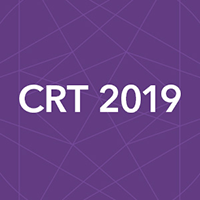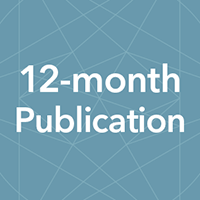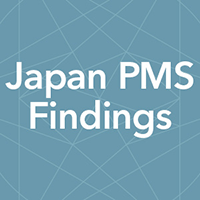
The industry-wide discussion and the FDA letter is in response to a meta-analysis published in the Journal of the American Heart Association regarding mortality rates related to the use of paclitaxel-coated stents and balloons. The meta-analysis includes Zilver PTX. We share the same concern for patient safety and support the development of peer-reviewed literature that discusses devices used to treat patients suffering from PAD. We also believe that to appropriately analyze the role of paclitaxel on mortality, a deeper understanding of patient-level data is required. Cook Medical is collaborating with medical societies, physicians, and industry partners to further review patient-level data.
Cook Medical is providing our extensive long-term data on Zilver PTX, our drug-eluting stent. Zilver PTX is a paclitaxel-coated stent that received CE Mark approval in 2009 and was approved by the FDA in 2012 through the premarket approval process.
View Article
If you have questions about our data or Zilver PTX, please contact us at zilverptx@cookmedical.com and a member of our team will respond within 24 hours.
RCT Data Disclosure
In the spirit of full transparency, which is a highly valued principle at Cook Medical, we are releasing de-identified patient-level data for our Zilver PTX Randomized Controlled Trial. The only modifications we’ve made to this data are designed to guarantee that patient privacy and confidentiality are always protected.
- This dataset now includes additional vital status data for patients that did not originally complete the study. For patients that were found to have died, information on cause of death was not available; therefore, there was also no CEC adjudication or categorization possible for these patients.
- This dataset now includes additional vital status data for patients that did not originally complete the study; therefore, the panel pack and panel presentation do not reflect this newer information.
Request Complete Zilver PTX RCT Dataset
Terms and Conditions
The following Terms and Conditions apply for use of the Zilver PTX Randomized Controlled Trial dataset (the “Dataset”). Downloading the Dataset indicates your acceptance of the following Terms and Conditions so long as you retain any of the Dataset, regardless of format or storage method.
- The Dataset is available for access by all parties at no charge.
- No express or implied warranties are made with respect to the Dataset by any Cook Medical company, affiliate, or employee.
- The Dataset will only be used for non-commercial research purposes and will not be used for any illegal purpose. No print out or electronic version of the Dataset or its contents may be used by you in any litigation or arbitration matter whatsoever under any circumstances.
- The Dataset will not be processed in any way to attempt to identify clinical trial participants.
- Cook Medical is not responsible for any data from the Dataset that has been modified, altered, or manipulated by any party.
- Allowing public access to the Dataset does not confer any proprietary rights to the data contained therein to third parties.
- In accordance with Cook Medical’s legitimate interest to manage and monitor access to the Dataset to ensure it is used in accordance with our terms and conditions, Cook Medical requires personal information about the requester of the Dataset. This personal information requested is limited to requester name, hospital/customer affiliation and email address and will be used by Cook Medical in line with its Privacy Statement.
Cook’s Presentation to FDA Advisory Panel
Presented by: Aaron Lottes, PhD, and Michael Dake, MD | June 2019
The Cook analysis of actual treatment of Zilver PTX patients included the updated status for 92% of patients who were previously lost to follow-up. The all-cause mortality rate for the PTA/BMS group was 15.6% and 18.9% for the Zilver PTX group (p-value = 0.46). The addition of the new data confirmed no mortality signal for Zilver PTX.
Conference Presentations
Below we have collected recent presentations looking at the meta-analysis published in the Journal of the American Heart Association and reviewing our data on Zilver PTX.
Presented by: Thomas Zeller, MD | January 2020
Zilver PTX demonstrated high rates of freedom from TLR for Zilver PTX vs PTA/BMS for occluded lesions, severely calcified lesions, lesions > 10 cm in length, and vessels that had a measurement of < 4.5 mm in diameter.
Presented by: Michael D. Dake, MD | November 2019
Zilver PTX shows benefit across different risk factor groups. Greater relative benefit was observed in groups with fewer risk factors. Benefit–risk ratios must be considered for individual patients.
Presented by: Michael D. Dake, MD | September 2019
To address the limitation of missing data, additional 5-year vital status data was collected and is now available for 94% of the patients in the RCT. In this analysis of actual treatment, there is no difference between the mortality rates for Zilver PTX and PTA/BMS, with a p-value of 0.60, and there is no mortality signal for the Zilver PTX stent.
Presented by: Carlos Mena, MD | March 2019
The “intent-to-treat” analysis shows a 5-year all cause mortality rate of 22.1% for the Zilver PTX primary randomization arm and 15.3% for the PTA primary randomization arm (p-value = 0.04). However, this analysis does not recognize that 94 of the 237 patients (40%) in the primary PTA arm were actually treated with a Zilver PTX stent yet analyzed as PTA patients and not Zilver PTX patients in this intent-to-treat analysis.
Presented by: Gary Ansel, MD | March 2019
The Zilver PTX RCT had a unique trial design. The RCT included a primary and secondary randomization, as well as an opportunity for patients in the PTA arm to cross over to treatment with Zilver PTX after experiencing a target lesion revascularization (TLR) in the first 12 months. As a result of this trial design, 40% of patients who were initially assigned to the PTA arm were subsequently treated with Zilver PTX. In total, 70% of the patients enrolled in this trial received a Zilver PTX stent.
View PresentationView Patient Flowchart
Presented by: Michael Dake, MD | March 2019
The “as-treated” analysis shows a mortality rate of 18.7% for Zilver PTX patients and 17.6% for PTA/BMS patients (p-value = 0.53). This “as-treated” Zilver PTX group includes all patients who received a Zilver PTX stent.
View PresentationView 5-Year Kaplan-Meier Mortality
Presented by: Michael Dake, MD | January 2019
Causes of death were examined between the “as-treated” Zilver PTX and PTA/BMS groups. There was no increased rate of cardiovascular, cancer, or other cause of death for Zilver PTX compared to PTA/BMS.
View PresentationView Causes of Death
Presented by: Michael Dake, MD | November 2018
Zilver PTX Global Data Analysis Highlights DES Benefits in Challenging Patient Populations.
Cook Medical Sponsored Webinar
Is Paclitaxel safe in the periphery? The breakdown of the Zilver PTX data
In a Cath Lab Digest interview sponsored by Cook Medical, Drs. Michael Dake and Gary Ansel discuss 5-year Zilver PTX data that were recently published in Circulation.
Publications
Provided below are links to the selected original Zilver PTX data publications.
Published by: Cardiovasc Intervent Radiol | Dake et al.
“Paclitaxel-coated Zilver PTX drug-eluting stent treatment does not result in increased long-term all-cause mortality compared to uncoated devices.”
E-published ahead of Print: J Am Coll Cardiol | Secemsky et al.
“Drug-Eluting Stent Implantation and Long-term Survival following Peripheral Artery Revascularization”
Published by: Circulation | Dake et al.
“Durable clinical effectiveness with paclitaxel-eluting stents in the femoropopliteal artery: 5-year results of the Zilver PTX randomized trial.”
Published by: J Endovasc Ther | Torii et al.
“Safety of Zilver PTX drug eluting stent implantation following drug coated balloon in healthy swine model.”
Published by: Circ Cardiovasc Interv | Dake et al.
“Paclitaxel-eluting stents show superiority to balloon angioplasty and bare metal stents in femoropopliteal disease: twelve-month Zilver PTX randomized study results.”
Published by: Cardiovasc Intervent Radiol | Kichikawa et al.
“Zilver PTX post-market surveillance study of paclitaxel-eluting stents for treating femoropopliteal artery disease in Japan: 2-year results.”
Published by: J Endovasc Ther | Dake et al.
“Nitinol stents with polymer-free paclitaxel coating for lesions in the superficial femoral and popliteal arteries above the knee: twelve-month safety and effectiveness results from the Zilver PTX single-arm clinical study.”
Published by: J Vasc Interv Radiol | Cipollari et al.
“Long-term effectiveness of the Zilver PTX drug-eluting stent for femoropopliteal peripheral arterial disease in patients with no tibial runoff vessels: Results from the Zilver PTX Japan post-market surveillance study.”
Published by: J Vasc Interv Radiol | Dake et al.
“Polymer-free paclitaxel-coated Zilver PTX Stents–evaluation of pharmacokinetics and comparative safety in porcine arteries.”


















